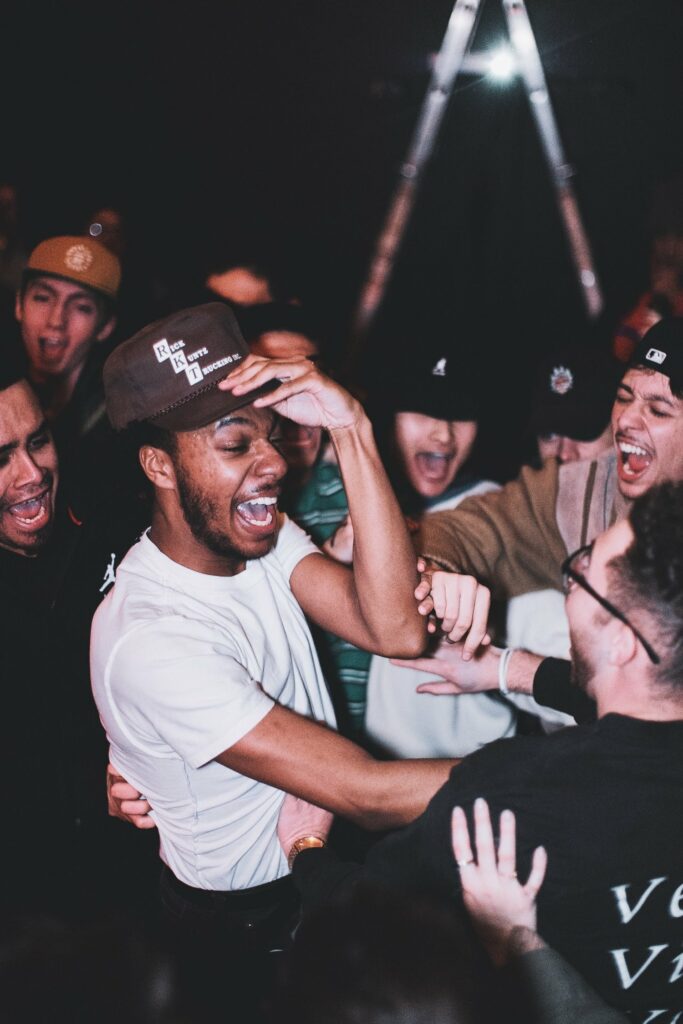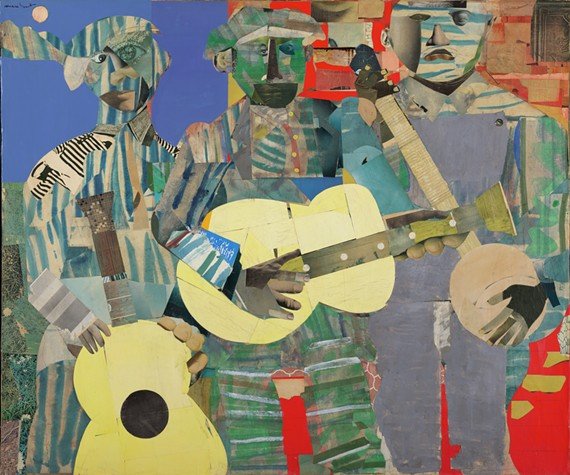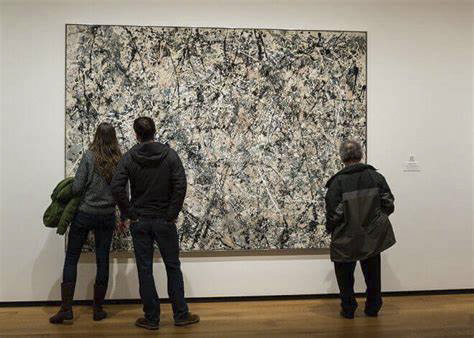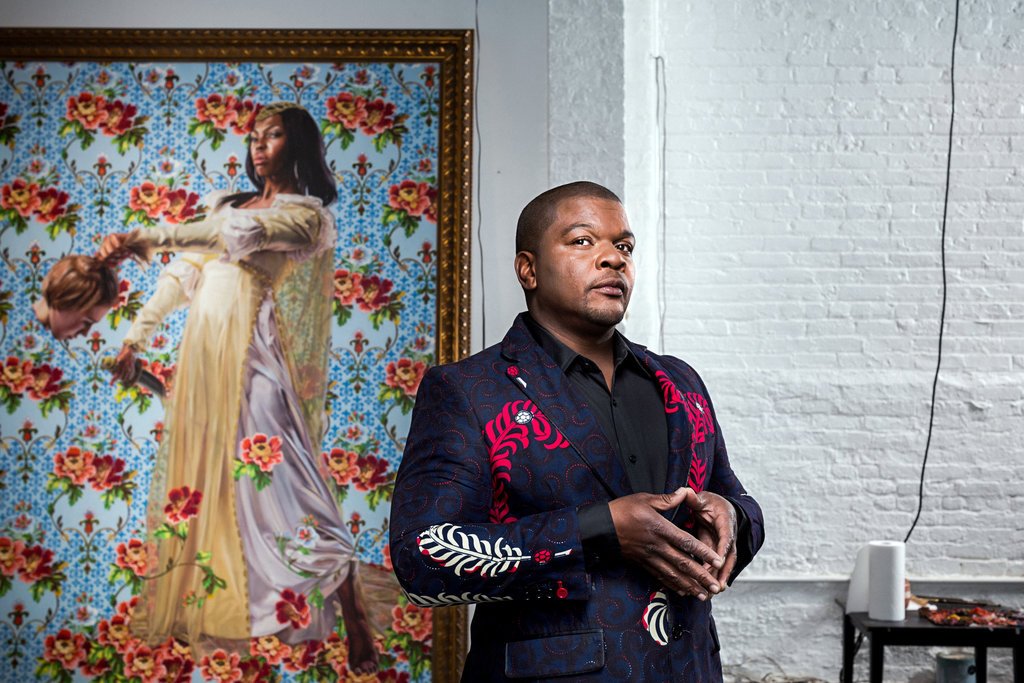
Experience the Fusion of Art and Music – Drop the Needle: Art/Listening Party
The underlying influence of music can be credited as being a significant factor in shaping some of the most iconic art pieces we know today. The connection has inspired groundbreaking creativity and left us mystified by the depth of emotions showcased through various mediums. Particularly in the black community, the impact of iconic music has been a recurring theme in inspiring heart-touching art.
The “Drop the Needle” is our new series of art talks in collaboration with Brixton Brewery. which highlights the connection between the visual arts and music through a series of conversations. The event will feature artists exploring the music that inspired their creative process and practice.
The first talk featured concept and digital artist Junior Tomlin, known for his distinctive airbrush style, which blends Sci-Fi and fantasy, on Monday, 27th March 2023, at Brixton Brewery Taproom in south London. Dubbed the ‘Salvador Dali of Rave,’ Tomlin was the creative genius behind the space-inspired flyer and poster art of the 80s and 90s, making him one of the most sought-after designers during the golden era of Rave music.
Tomlin was in conversation with Sukai Eccleston of CasildART discussing the music genres and artists that have influenced his artistic process, particularly during the Rave and Drum & Bass era, and ‘dropping the needle’ on some of his favourite tracks to get the attendees in the dancing mood.
To hear Junior’s listening tracks, click here

Since the dawn of time, music and art have been quintessential to the human experience. These creative outlets have inspired us since our earliest days and continue to remain central to the human experience. Especially the relationship between visual art and music has a storied history, with each discipline having a deep influence on the other.
Throughout history, storied visual artists have been inspired by music and have credited music as the source of their artistic endeavours. The impressionist painters of the 19th century offer a compelling example. Art created during the era showcases a strong influence from composers like Maurice Ravel and Claude Debussy. The impressionistic style of music popular at the time left a strong impact on the art and can be observed in the ethereal nature of paintings from different eras.

“Three Folk Musicians,” 1967, Romare Bearden (American, 1911-1988), collage of various papers with paint and graphite on canvas, 50 x 60 in. Art © Romare Bearden Foundation/Licensed by VAGA, New York, NY
The work of artists like Romare Bearden and Aaron Douglas was deeply influenced by the jazz music of the era. The genre was considered to be an expression of black art and was deeply celebrated for its expression of emotions.
Globally renowned abstract artist Jackson Pollock also credits jazz music as a major source of inspiration for his art. His improvisational art has been known to be influenced by the rhythm and energy of jazz music while he painting. Similar to the roots of Jazz music, Pollock’s art forms have reflected traits like improvisation and visual spontaneity. The drip and splash techniques across the canvas are similar to the approach adopted by jazz musicians that have created improvisational music by responding to different moods.

LAVENDER MIST copyright Jackson Pollock
The syncopated rhythms and improvisational solos that breathe life into jazz music have been a strong influence on the swirling lines and drips that have shaped the sense of motion in Jackson Pollock’s paintings.
In the modern era, painters like Paul Klee and Kandinsky have also exhibited an influence of music in their art. Kandinsky, in particular, developed a reputation for his belief in “synesthesia”. The phenomenon referred to the act of experiencing a sense through another. This referred to the ability to hear color or to see sound. He believed that music had a profound impact on the human psyche and that it could be expressed in visual terms through the use of abstract shapes, colors, and forms.

Polyphony, 1932 by Paul Klee copyright
Coming from a formal background in music, Klee’s art also reflects the whimsical qualities of musical notation and rhythm as the focal points of this work. The improvisational qualities of the art showcase the spontaneity of music.
INFLUENCE OF MUSIC ON BLACK VISUAL ART
Beyond the influence of iconic figures in art, music has been an impactful force for black visual artists. The inspiration from the music of the time has been showcased through decades of creative oeuvre by renowned names like Jacob Lawrence. Lawrence became iconic for his visual art influenced by black music, particularly jazz, blues, and spirituals. Drawing from his brought-up in Harlem during the Renaissance, Jacob’s art pieces reflected the experiences and struggles that he witnessed.
The era’s music was central to his creativity, and his pieces reflected musicians and dancers as a central focus in his art. The presence of dynamic colours and vibrant forms in his art was influenced by the energy associated with jazz music. A key example of this impact can be witnessed in the series “The Migration of the Negro” which depicted the movement of black Americans from the South to the North during the early 20th century. The art piece deeply reflects the vitality of migrants and their music and is an iconic reflection of how music has been a force in impacting black art over the years. Across other pieces like the “The Builders”, Lawrence showcased the role of African American labour in the construction of the Empire State Building and depicted the structures through the lens of the culture. Jazz and blues musicians have been a significant presence in the series and reflect how instrumental music was to the creativity of artists from the time.

Problem of Water copyright Cheri Samba
The influence is equally persistent among other names from around the globe. Legendary Congolese painter Chéri Samba has also showcased influences from the “Rumba” music of the region across his art. Samba’s art is synonymous with bright colors and bold text that comments on socio-political issues. The elements in his paintings reflect the story of the circumstances of Congo during his growth years, and the medium is deeply connected to the socially conscious music emerging from the region.
A TRANSCENDENT IMPACT – OVER THE YEARS
The connection between visual art and music goes far beyond just the genre of Jazz. The collaboration between musicians and visual artists has been deeply documented and tells the story of a mutually inspirational relationship rooted in creativity. A prime example of this is the collaboration between painter Jean-Michel Basquiat and jazz musician Miles Davis. Similarly, the cover art of R&B legend Marvin Gaye’s “I Want You” album featured the work of painter Ernie Barnes. The painting perfectly captures the sensual, romantic mood of the album’s title track, which is one of Gaye’s most iconic songs. In addition to the album cover, Barnes’ artwork also appeared on the inner sleeve of the LP, as well as on the promotional posters and advertisements for the album. His work helped to establish the visual identity of the “I Want You” album, and it remains an enduring testament to the power of collaboration between different forms of artistic expression.
Basquiat worked on the album cover art for the “The Miles Davis and Robert Glasper Project: Everything’s Beautiful” at Davis’s request, and the result was an iconic painting that showcases Basquiat’s signature style into a timeless piece of art and music history.

Kehinde Wiley Art
Even in modern hip-hop, greats like rapper Jay-Z have collaborated with artists like Kehinde Wiley. Wiley is renowned for his large-scale portraits, which draw from classical European art styles. Both artists worked on the intersection of music and art for the cover of Jay’s 2017 Album “4:44”. The cover serves as a powerful testimonial to the deep influence between both disciplines.

